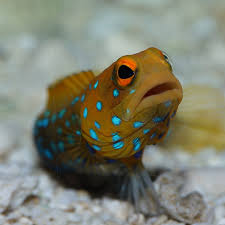Exploring the Presence of Dragons in Classical Chinese Literature

The dragon has held an esteemed position in Chinese culture for centuries, embodying both mystical power and divine authority. As one of the most recognizable symbols in Chinese mythology, the dragon often appears in various forms across literature, especially in classical Chinese works. Its significance extends beyond simple mythological stories; the dragon serves as a symbol of strength, protection, prosperity, and celestial power. This article delves into the appearance and symbolism of dragons in classical Chinese literature, exploring how their depictions have influenced the narrative structure, themes, and cultural values of the texts in which they appear.
Dragons in Ancient Chinese Literature
Classical Chinese literature, spanning from the earliest dynasties to the imperial era, is rich with references to dragons. In these texts, dragons are not merely mythical creatures; they represent important cultural concepts, guiding the actions and fates of characters, as well as the spiritual and moral frameworks of society. From ancient poetry to legendary prose, the presence of the dragon serves to connect the mortal world with the divine, bridging human existence with supernatural realms.
The “Classic of Mountains and Seas” (山海经)
One of the earliest and most important sources of dragon mythology in Chinese literature is the Classic of Mountains and Seas (山海经, Shan Hai Jing), a collection of mythological texts dating back to the Warring States period (475–221 BCE). This work describes various creatures, deities, and landscapes, often focusing on mythical beings that inhabit the earth, seas, and skies. The dragons in the Shan Hai Jing are portrayed in a diverse range of forms, often acting as protectors of natural elements such as rivers and mountains.
In this text, the dragon is associated with the element of water, often inhabiting the oceans or rivers, which was a common belief in early Chinese thought. The dragon in the Shan Hai Jing is both a creature of destruction and regeneration. Its connection to water symbolizes the cycle of life, death, and rebirth, which is central to Chinese cosmology. This early depiction of dragons as elemental beings foreshadows their later roles in both classical literature and Chinese folklore as harbingers of rain, prosperity, and harmony with nature.
The Zhuangzi (庄子)
Written by the philosopher Zhuang Zhou during the Warring States period, the Zhuangzi is one of the foundational texts of Daoism. The work contains numerous allegorical stories and fables that explore themes of non-action (wu wei), the fluidity of life, and the pursuit of transcendence. The Zhuangzi features a number of references to dragons, which are often used to illustrate the Daoist principles of freedom and transformation.
In one famous story from the Zhuangzi, Zhuang Zhou dreams of becoming a butterfly, only to awaken and realize he was once a butterfly dreaming of being Zhuang Zhou. The transformation of Zhuang Zhou into a butterfly is often interpreted as an expression of the Daoist ideal of transcending the limitations of human existence. Similarly, dragons in the Zhuangzi are symbols of transformation and spiritual awakening. The dragon is often portrayed as a creature that transcends the mundane, embodying the Daoist pursuit of harmony between the individual and the cosmos.
Dragons in the Zhuangzi are frequently associated with the natural world and the power of nature. In one story, a dragon’s leap into the sky is a metaphor for breaking free from worldly constraints. This portrayal of the dragon reflects the Daoist belief in embracing change and following the natural flow of the universe, without resistance or force.
Dragons in Chinese Classical Poetry
Classical Chinese poetry, particularly during the Tang (618–907 CE) and Song (960–1279 CE) dynasties, frequently invokes the dragon as a symbol of imperial power, divine authority, and cosmic harmony. In these works, the dragon is often used as a metaphor for the emperor, who is seen as the “Son of Heaven” (天子), the earthly representative of the celestial dragon. The connection between the emperor and the dragon is a central theme in many poems, reinforcing the idea that the emperor’s power is granted by divine mandate.
Li Bai’s Poetic Imagery
Li Bai (701–762), one of the most celebrated poets of the Tang dynasty, frequently incorporated dragons into his works. Known for his romantic and transcendental style, Li Bai often used the dragon as a symbol of nature’s grandeur and the potential for human transcendence. In one of his most famous poems, Drinking Alone by Moonlight (月下独酌), Li Bai writes:
“I raise my cup to invite the moon,
My shadow and I are companions in the night.
The moon cannot drink, and my shadow leaves,
But the dragon of the river bends its head in reverence.”
Here, the image of the dragon bending its head in reverence to the moon reflects the dragon’s role as a symbol of harmony and alignment with the cosmos. This illustrates the Taoist belief in the interconnectedness of all things, where even the powerful dragon must bow to the forces of nature, including the moon.
Du Fu’s Use of the Dragon
Du Fu (712–770), another famed Tang dynasty poet, employed dragons in his works to comment on the emperor’s authority and the natural world. In his Spring View (春望), Du Fu laments the disarray and suffering caused by war, referencing the emperor’s failed reign in his metaphor of the dragon:
“The dragon’s path is hard to see,
Yet the emperor must govern the people.”
Du Fu’s reference to the “dragon’s path” reflects his belief that the ruler’s legitimacy was tied to his connection with the divine. However, the dragon’s obscured path also symbolizes the difficulty of ruling justly and harmoniously in a time of upheaval. The dragon, in this context, represents both the potential for greatness and the responsibility that comes with power.
The Dragon in Legendary and Historical Literature
In addition to poetry, dragons also appear prominently in Chinese historical and legendary literature, particularly in texts that chronicle the lives of emperors, generals, and heroes. These stories often portray dragons as both protectors and guides, aiding the protagonists in their quests for victory and peace.
The Investiture of the Gods (封神演义)
One of the most famous legendary texts that features dragons is the Investiture of the Gods (封神演义, Fengshen Yanyi), a novel written during the Ming dynasty. This work is set in the era of the Shang dynasty and recounts the epic struggle between the forces of good and evil. Dragons in the Investiture of the Gods are depicted as both helpers and adversaries, representing the forces of nature that must be controlled in order to achieve balance in the world.
One of the key characters, the great general Jiang Ziya, is said to have received divine assistance in the form of a dragon to help him overthrow the corrupt Shang dynasty and restore order. The dragon in this context is a symbol of divine authority, reinforcing the idea that the heavens favor the righteous and will help restore the rightful order.
The Records of the Grand Historian (史记)
Sima Qian’s Records of the Grand Historian (史记, Shiji), written during the Han dynasty, is another work in which dragons appear prominently. In the historical account of the Yellow Emperor (Huangdi), one of China’s legendary sovereigns, dragons are depicted as guardians of the emperor’s destiny. The story of the Yellow Emperor’s rise to power is intertwined with the myth of his connection to a dragon that guides him through various trials. This association further cements the belief in the dragon’s role as both protector and symbol of imperial legitimacy.
Dragons as a Metaphor for Cosmic Order
In classical Chinese literature, the dragon is not only a symbol of earthly power but also a manifestation of the cosmic order. The dragon embodies the balance between heaven and earth, representing both the celestial and terrestrial realms. Its association with water, wind, and rain is a reflection of the Daoist and Confucian belief in the interconnectedness of all elements in the natural world. In this way, the dragon in Chinese literature represents the harmony of the universe, guiding individuals and nations toward balance and prosperity.
Conclusion
The dragon’s presence in classical Chinese literature reflects its deep cultural significance in Chinese society. From its early appearance in the Classic of Mountains and Seas to its more complex portrayals in Tang dynasty poetry and legendary texts, the dragon remains a potent symbol of power, protection, and cosmic harmony. Whether as a divine being aiding the emperor, a transformative figure in Daoist thought, or a symbol of natural forces, the dragon continues to shape the moral and philosophical narratives that form the foundation of Chinese literature and culture. As such, the dragon is more than just a mythical creature—it is an enduring symbol of the interconnectedness of the human and divine, the balance of nature, and the unyielding pursuit of transcendence.
